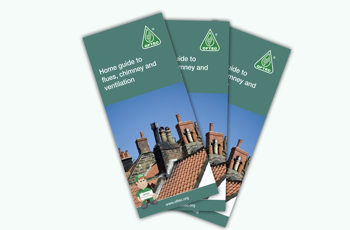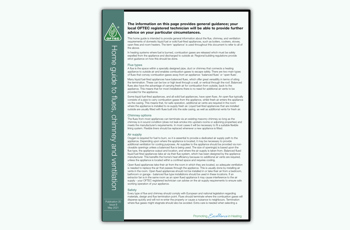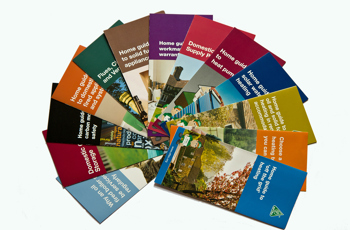Home guide to flues, chimney and ventilation
This page is intended to provide general information about the flue, chimney, and ventilation requirements of domestic liquid fuel or solid fuel-fired appliances, such as boilers, cookers, stoves, open fires and room heaters. The term ‘appliance’ is used throughout this page to refer to all of the above. Your local OFTEC registered technician will be able to provide further advice on your particular circumstances.
Flue types
A flue is the space within a specially designed pipe, duct or chimney that connects a heating appliance to outside air and enables combustion gases to escape safely. There are two main types of flues that convey combustion gases away from an appliance: ‘balanced flues’ or ‘open flues’.
Many liquid fuel-fired appliances have balanced flues, which offer great versatility in terms of siting the termination. These can be low or high level through a wall, or vertical through the roof. Balanced flues also have the advantage of carrying fresh air for combustion from outside, back to the appliance. This means that for most installations there is no need for additional air vents to be provided for the appliance.
Some liquid fuel-fired appliances, and all solid fuel appliances, have open flues. An open flue typically consists of a pipe to carry combustion gases from the appliance, whilst fresh air enters the appliance via the casing. This means that, for safe operation, additional air vents are required in the room where the appliance is installed to re-supply fresh air. Liquid fuel-fired appliances that are installed outside are usually fitted with flues built into the side casing, as well as additional vents for fresh air.
Chimney options
The flues from most appliances can terminate via an existing masonry chimney so long as the chimney is in sound condition (does not leak smoke into upstairs rooms or adjoining properties) and meets the manufacturer’s requirements. In most cases it will be necessary to fit a suitable flexible lining system. Flexible liners should be replaced whenever a new appliance is fitted.
Air supply
Oxygen is required for fuel to burn, so it is essential to provide a dedicated air supply path to the appliance. Depending upon where the appliance is located, it may be necessary to provide additional ventilation for cooling purposes. Air supplies to the appliance should be provided via non-closable openings unless a balanced flue is being used. The size of opening(s) is based upon the flue type, the appliance output and location, and where the air supply is taken from. Balanced flued liquid fuel-fired appliances take air via their flue system, which has been designed by the appliance manufacturer. This benefits the home’s heat efficiency because no additional air vents are required, unless the appliance is located within a confined space and requires cooling.
Open flued appliances take their air from the room in which they are located, so adequate ventilation is needed to replace the air that passes through the appliance. This is usually done by installing air vents in the room. Open flued appliances should not be installed in or take their air from a bedroom, bathroom or garage - balanced flue type installations should be used in these locations. If an extractor fan is in the same room as an open flued appliance it may cause interference to the air supply - your OFTEC registered technician can advise on the air supply requirements to ensure safe working operation of your appliance.
Safety
Every type of flue and chimney should comply with European and national legislation regarding materials, design and flue termination point. Flues should terminate where the combustion gases will disperse quickly and will not re-enter the property or cause a nuisance to neighbours. Termination where flue gases might stagnate should also be avoided. Extra care is needed when selecting a suitable position for a condensing appliance flue termination. When operating at their most efficient, condensing appliances can emit a ‘plume’ of water vapour from the flue terminal, which should be considered when siting the appliance. Your OFTEC registered technician will be able to advise on the most suitable flue system to ensure compliance and reliable operation.
Annual inspection
Both liquid fuel and solid fuel-fired appliances should be serviced at least annually so that they operate safely and correctly. This work should include the checking of flue and ventilation openings, where applicable, to ensure that they are in good condition and not obstructed.
Open flued appliances, both liquid fuel and solid fuel-fired, should have their flues or chimneys swept regularly - twice a year for solid fuel appliances and as advised by your service engineer for liquid fuel-fired appliances. We recommend using a member of a recognised sweeps’ organisation, such as the National Association of Chimney Sweeps, the Guild of Master Chimney Sweeps, Association of Professional Independent Chimney Sweeps, Northern Ireland Association of Chimney Sweeps or the Chimney Sweep Association of Ireland depending on your region.
Please wait ...



